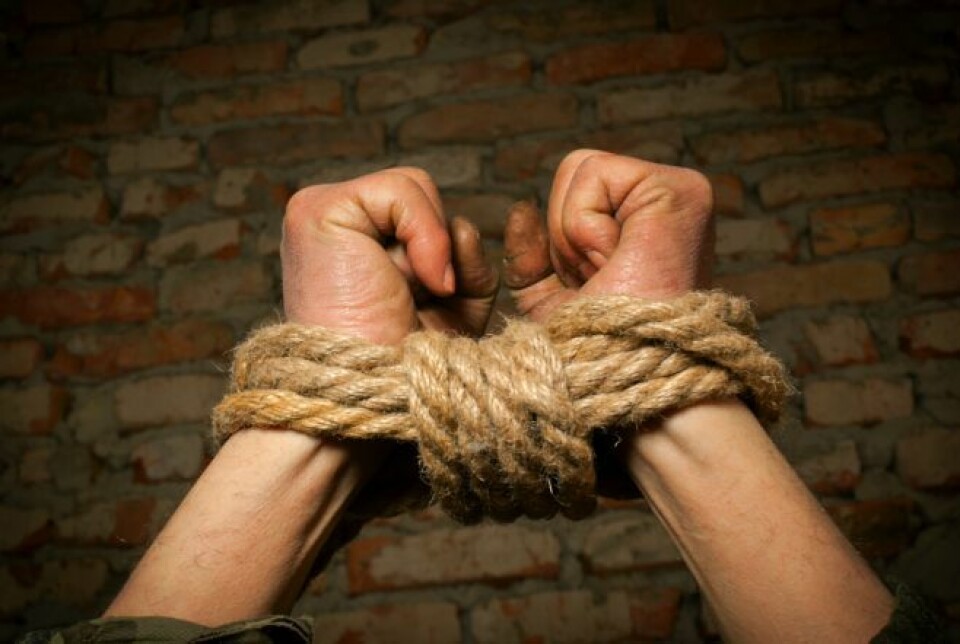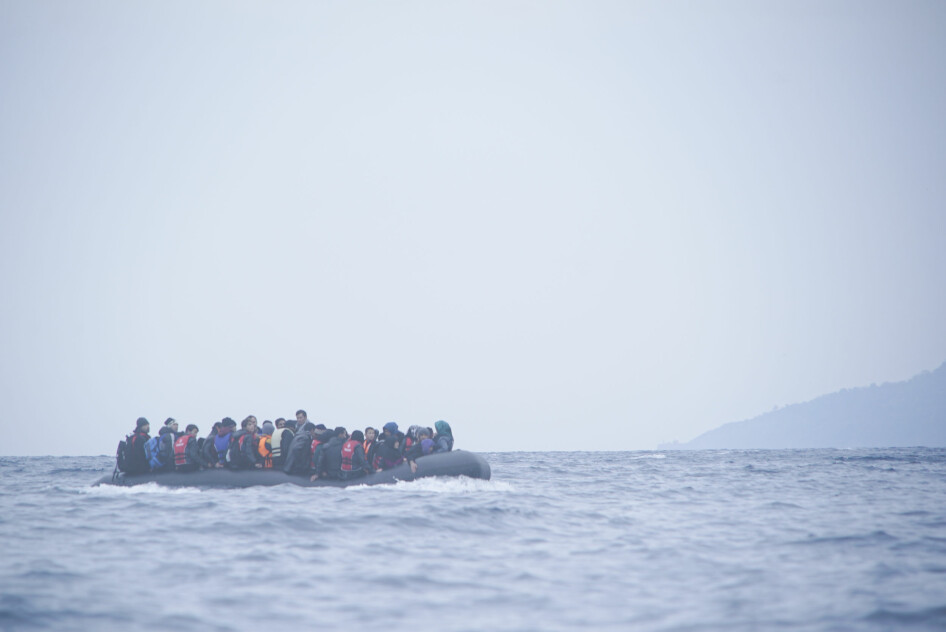
Trafficking in human beings: A threat to European state security?
After the so-called ‘migrant-crisis’, the EU has described trafficking in human beings as a threat to EU states, societies and economies. What implications does this shift have for the victims of trafficking? GLOBUS MA Vera Skjetne discusses the recent turn in EU’s trafficking policies.
Human rights protection and state responsibility
The EU’s legal and policy framework on trafficking in human beings, developed in 2011-2012, marked a turn away from the international approach to human trafficking. While the international community treated trafficking as ‘transnational organized crime’, the EU now emphasised that trafficking was a violation of human rights. The EU also highlighted the gender dimension of human trafficking. The problem of trafficking in human beings was described as being rooted in gender inequality and in vulnerabilities due to other social and economic factors, such as age and ethnicity. Furthermore, the EU placed the responsibility for justice for the victims, on the EU‘s states.
When faced with the so-called ‘migrant crisis’ in 2015, attention to trafficking originating outside the EU increased, and politicians discussed the need to save refugees from what they called ‘the 21st century slave trade’. But, how did the EU follow up its self-proclaimed responsibility to ensure protection, assistance, support and human rights for the victims of human trafficking, as described in the 2011 Anti-Trafficking Directive?
Shifting victims: From Individuals to states
Since the ‘migrant crisis’ there has been a clear shift in how trafficking in human beings has been presented by the EU. First, the EU does not only point to human trafficking as a gross injustice to individuals, but also emphasises how ‘societies’ and ‘economies’ suffer from it. Second, in addition to exploiting the individual victims, traffickers also ‘abuse’ asylum systems and legitimate business structures. Hence, human trafficking is not only depicted as a threat to individuals, to gender justice or to the justice of vulnerable groups. After 2015, both trafficking in human beings, and the networks involved, are presented as threats states need to be protected from.
This shift in focus from individual human beings to acknowledging the state as a victim of human trafficking is also evident when more explicitly linked to gender. Most strikingly is the portraying of female victims of trafficking following the ‘migrant crisis’. For example the EU warns of a ‘worrying sharp increase in Nigerian women and girls leaving Libya’. The problem is presented as the fact that women and girls are coming to EU, rather than those women being exploited on their way, or once reached Europe.
Trafficked, smuggled or… terrorist?
The shift in the EU’s approach to human trafficking also includes stronger links to smuggling and terrorism. Whereas human trafficking and smuggling of people were completely separated in EU policy documents before 2015, these phenomena are now increasingly linked. In many of the policy documents on trafficking after 2015, trafficking and smuggling are treated as something alike. One example is the 2015 European Agenda on Migration. Every time trafficking in human beings is addressed – eleven times in six different sections – it is mentioned together with people smuggling. The EU’s solutions to trafficking and smuggling is to ‘disrupt’ and ‘crack down’ trafficking and smuggling networks, and capturing and destroying their vessels.
According to the EU, the distinction between human trafficking and people smuggling can be described as follows: Both human trafficking and people smuggling involve violation of the law. However, smuggling is always transnational, it involves consent and the smuggled person is free upon arrival. Trafficking on the other hand, can take place within state-borders as well as across borders. In a case of border-crossing trafficking, the individual is further exploited once the border is crossed and the final destination is reached.

There has been a shift in the EU's policies on human trafficking since the 2015 migrant crisis (Photo: Mstyslav Chernov/Unframe, CC BY-SA 4.0)
It is important not to disregard the horrible brutality people on the move often experience during a process of smuggling, and it is certainly important not to undermine that people giving consent to be smuggled in the first place might be exposed to violence and exploitation by traffickers later on. However, by blending the two phenomena and referring to trafficking and smuggling interchangeably, the EU creates uncertainty about where the line between trafficking and smuggling should be drawn. Thus, the question of who are trafficked and who are smuggled becomes complicated, and the victims of trafficking are presented as having some level of responsibility for the injustice they suffer, due to their voluntary engagement in illegal border crossing. This might further contribute to undermine the legal distinction between human trafficking and people smuggling, and the EU’s self-proclaimed obligation to protect the latter.
Strikingly, but less frequently mentioned than the coupling of human trafficking and smuggling, is the links drawn between human trafficking and terrorism. By linking human trafficking with terrorism, the EU move attention away from trafficked individuals to a possible terrorist. This is further amplified by the increased reference made to human trafficking as a security problem. In the first EU progress report on trafficking after 2015, human trafficking is identified as a ‘significant security threat’, and in the European Agenda on Security, trafficking in human beings is considered ‘directly relevant’ to security. In what way trafficking threatens the security of the EU is however not spelled out.
All in all, these couplings contributes to an impression of trafficking in human beings as a grey zone of injustice extending from the trafficked individual, to the more ‘voluntary’ smuggled migrant, and to the extreme: a possible terrorist. By linking the process of trafficking and smuggling, together with terrorism and emphasis on state security, the justice-focus is shifting from trafficked individuals to the EU states.
Justice for whom?
The uncertainty established by mixing smuggling and trafficking affects only the victims of trafficking originating outside the EU, as victims of trafficking within the EU do not cross borders illegally. But, how can victims of border-crossing trafficking be identified among smuggled individuals?
The most important difference between smuggling and border-crossing trafficking lies in whether the person is free or further exploited once the destination is reached. It is therefore easier to identify the victim of trafficking once the journey has ended and the border to Europe is crossed. However, the EU’s solution to trafficking originating outside Europe is to prevent and hinder people to reach EU borders, by disrupting trafficking and smuggling networks before they come to Europe. When people are stopped on the move, before they reach their final destination, it is almost impossible to distinguish victims of trafficking from the autonomous smuggled persons. It is therefore more likely that the victims of trafficking are sent back to somewhere outside Europe, rather than having their rights ensured in Europe.
The EU’s focus is to stop people from arriving, regardless of if they are smuggled or trafficked. As the focus shifts from the individual victim to the state as a victim, it is of less importance whether the person is free upon arrival or further exploited.
Indeed, when EU’s central tools to combat trafficking in human beings hampers the possibility of identifying the victims of trafficking originating outside EU borders, the promises of human rights and gender-sensitive support to the victims becomes empty. The approach to trafficking after the ‘migrant crisis’ can thus be understood as an attempt primarily to hinder the injustice of trafficking from reaching EU borders.
Even though the Union's approach to trafficking goes some distance to emphasising its obligation to ensure victims’ rights and gender-sensitive support, this has little effect if the victims of trafficking are not identified as such. This is particularly critical for victims of trafficking originating outside EU, who are often confused with ‘voluntarily’ smuggled persons and even terrorists.
This blog was written as part of the research project GLOBUS Reconsidering European Contributions to Global Justice (funded by the EU’s Horizon 2020 programme) and first published at the Global Justice Blog www.globus.uio.no.







